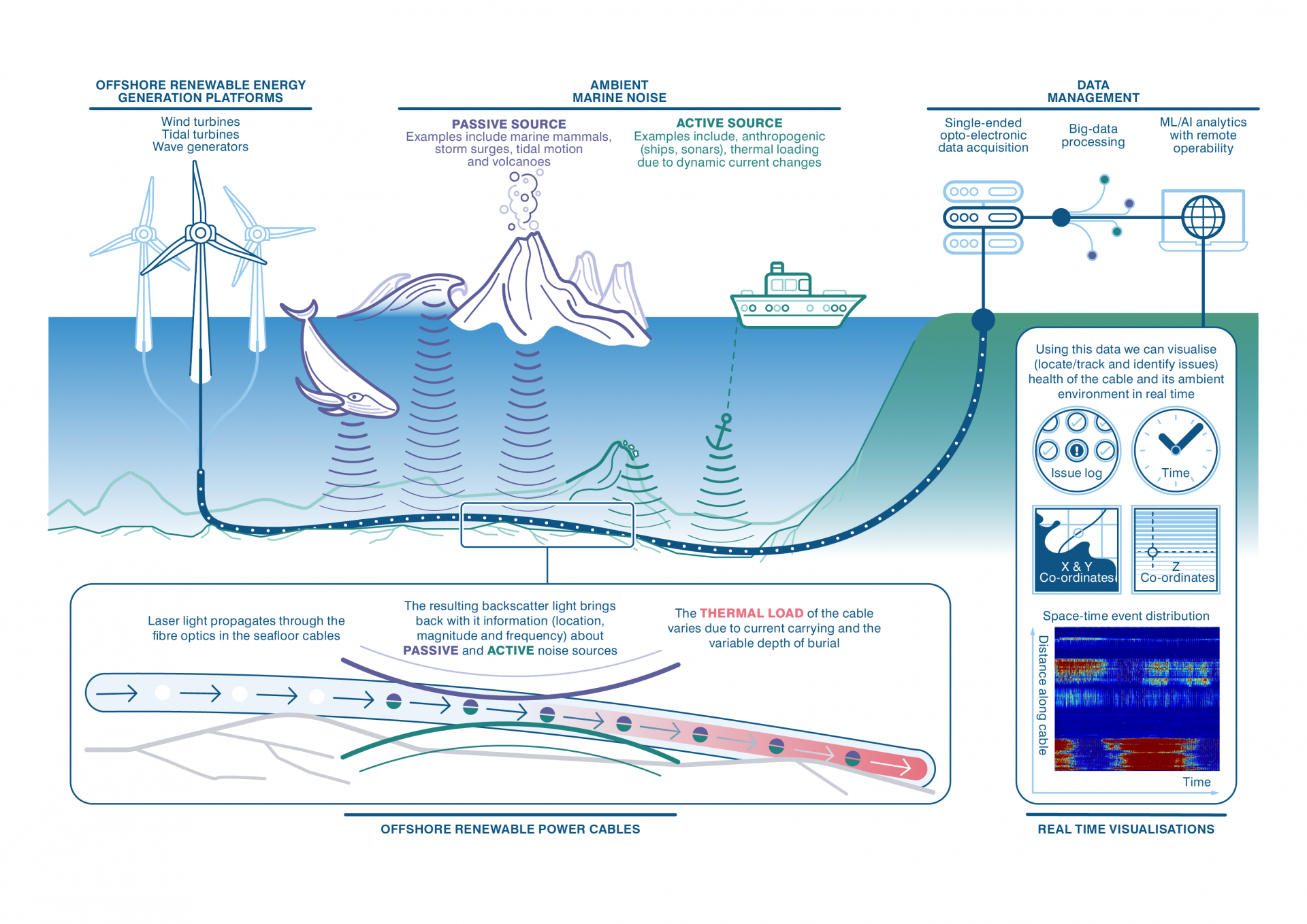The project is aimed squarely at improving the operational efficiency of offshore energy generation by alleviating the very real problems of damage to the cables that bring the energy back to shore. The cable damage and repair costs are dominant in determining the viability and profitability of offshore energy. We aim to develop innovative techniques to monitor the main hazards faced by the cables and either to detect them arising in real-time (saving time in repairs) or predicting incipient failures through improved understanding of the cable environment (such as backfill erosion, cable vibrations in spans subject to tidal flow, etc.) and then intervening before the damage occurs.
SHARC




